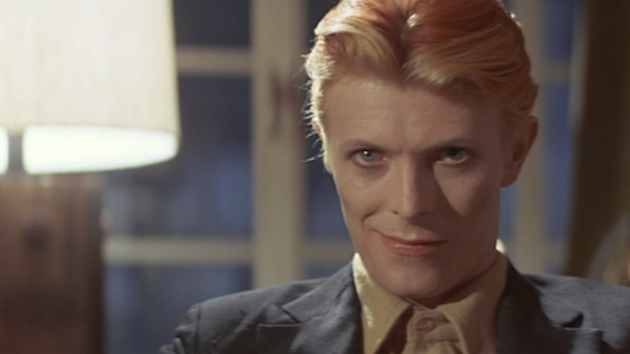Movie of the Week: The Man Who Fell to Earth

The passing of David Bowie has prompted a considerable outpouring of grief above and beyond what we normally see for a public figure, with many people – myself included – revisiting and celebrating the musician’s immense body of work, from the early-’70s Ziggy Stardust era, through the more commercial ‘80s Let’s Dance period, to his incredibly moving farewell album Blackstar.
Bowie had such a singular charisma onstage – he was arguably the greatest rock performer of all time – that it was only natural that he’d be drafted into the movies, where he turned in great performances in films like 1986’s Labyrinth (as the Goblin King), 1988’s The Last Temptation of Christ (as Pontius Pilate) and 2006’s The Prestige (as Nikola Tesla). But Bowie’s best-known screen role was his first, as the title character in Nicholas Roeg’s 1976 sci-fi drama The Man Who Fell to Earth.
This is a weird, slightly surreal tone-poem of a movie, with a plot that doesn’t really make itself clear until 90 minutes in and, being an independent feature produced before the massive wave of sci-fi pictures that followed Star Wars, only minimally interested in visual effects or overt science fiction elements. And yet it’s oddly compelling, largely because of Bowie’s low-key performance.
With his oddly-colored hair, his unnaturally pale complexion, and his permanently-dilated left eye, Bowie was a natural choice to play an alien. But he was uniquely qualified in another way to play a disaffected visitor gradually seduced by a corrosive modern culture.
It’s hardly slander to say that in 1976, David Bowie was in the grip of a major cocaine problem; legend has it that he was living entirely on milk, red peppers, and Peruvian marching powder during this time. Bowie admitted as much and sobered up only a couple of years later. The Man Who Fell To Earth serves as a fascinating document of the post-Ziggy Stardust era, where Bowie completely made himself over from decadent hard-rock space alien to the nattily dressed, soul-infused Thin White Duke; his pharmaceutically-induced emotional distance bleeds into the movie and serves his character well.
That character, Thomas Jerome Newton, finds himself in New Mexico and soon travels to New York to recruit a patent lawyer (Buck Henry, in bizarre magnifying-glass spectacles) to form and run a company based on nine different advanced technologies – including self-developing film, not all that far off from the digital photography of today. While the company quickly grows into a billion-dollar corporation, Newton secludes himself with a motel maid, who shows him the basics of 20th-century humanity – television, drinking, and sex – and he gradually loses his mind.
Make no mistake: this is a weird movie, far from technically perfect, and narratively kind of a mess. And yet it’s oddly compelling, with a time-skipping structure that doesn’t call attention to itself, some themes that are ahead of their time – including a gay relationship and Newton’s addiction to watching 16 screens at once – and a lot of surreal imagery.
Unfortunately, although images from the film were used for the album covers for Station to Station and Low, there’s no Bowie music here. Given Bowie’s famously shape-shifting nature during this period, one wonders whether Bowie’s onstage look at the time dictated his look in the film, or vice versa. Either way, it’s a very interesting document of one of the most engaging performers of all time in one of his most celebrated periods.
The Man Who Fell to Earth, as well as Labyrinth, The Last Temptation of Christ, and The Prestige is available to watch on-demand..
